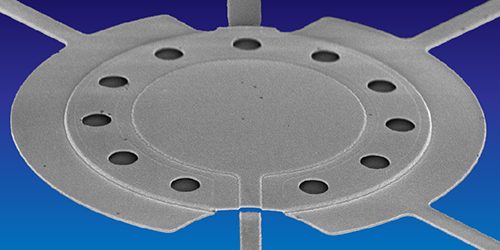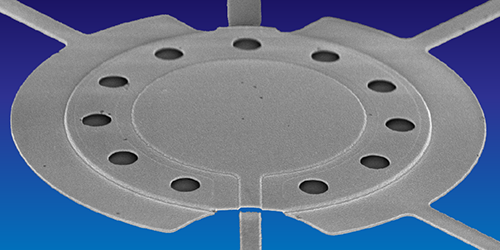A “Quiet” Measurement of a Quantum Drum
Measuring the back and forth motion of tiny mechanical oscillators is important in many fields of physics, including optics, electromechanics, and quantum sensing. The precision of these measurements, however, is limited by the inherent uncertainty in a quantum object’s state, also known as quantum noise. A new technique developed by Robert Delaney and Konrad Lehnert of the University of Colorado, Boulder, and colleagues achieves an unprecedentedly “quiet” measurement, opening the door for important applications of small mechanical oscillators.
The team focused on the drumhead-like oscillations of a 15- m-wide aluminum disk whose motion can be decomposed into two quadratures—dimensionless versions of the oscillator’s displacement and momentum. The Heisenberg uncertainty principle dictates that measuring the two quadratures simultaneously would add noise to a measurement of the disk’s mechanical motion that is on par with the disk’s residual quantum motion at absolute zero (zero-point motion). The added noise can be avoided by measuring only one quadrature. But previous attempts at this approach suffered from loss of signal or made the oscillator’s motion unstable. Delaney, Lehnert, and their collaborators got around this problem by modifying an existing measurement technique to intentionally induce the instability in a controllable way. As a result, the noise introduced by their measurement was less than 15% of the disk’s natural zero-point motion, a reduction of roughly a factor of 6 over other techniques.
Small mechanical oscillators are important in everyday technology such as cell phones, and they are increasingly being integrated into technologies for quantum computing and quantum networks. Lehnert and his research group are investigating these applications of mechanical oscillators, in which precise position measurements would be essential.
This research is published in Physical Review Letters.
–Meredith Fore
Meredith Fore is a freelance science writer based in Seattle, Washington.





